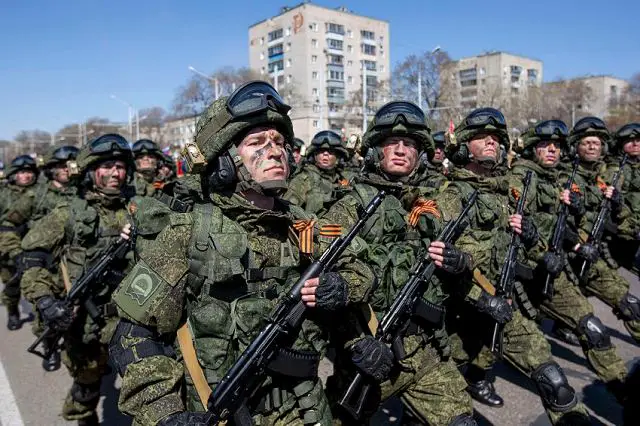Advanced synthetic materials used for body armor and helmets of Russian Ratnik-3 combat gear TASS 11811162
|
|
|||
|
Military Defense Industry Technology - Russia
|
|||
|
|
|||
| Advanced synthetic materials used for body armor and helmets of Russian Ratnik-3 combat gear. | |||
|
Advanced synthetic materials will both protect troops and slash the weight of the body armor and helmets to be used as part of the Ratnik-3 future soldier combat system, according to the Izvestia daily. The Russian Defense Ministry and Rostec Corporation intend to start making body armor, accoutrements and uniforms out of unique super-lightweight and strong materials designed for use as part of the third-generation advanced soldier combat system tentatively known as Ratnik-3, which research has begun earlier this year.
|
|||
|
|
|||
 Russian trrops with Ratnik individual combat gear Russian trrops with Ratnik individual combat gear |
|||
|
|
|||
|
The advanced research program was officially launched in January 2016. It is an in-depth pilot research designed to devise a concept of the third-generation soldier system. One of the key lines of research is the development and production of sophisticated materials, a Defense Ministry official close to the program says. In particular, a decision was made to introduce new-generation aramid fibers for making uniforms and accoutrement elements and to make body armor and helmets out of ceramic armor based on boron carbide.
The results of the research will be used in both the future third-generation soldier system and the elements of the recently developed Ratnik-2. The advanced materials are believed to be able to slash the weight of other gear as well without affecting its strength, the Defense Ministry official says. While the current body armor, including the groin, forearm and neck protectors, weighs around 15 kg, the development work in progress is expected to gradually reduce the weight by 20-30%. Aramid fibers are synthetic polyamides, which chemical and physical microstructure affords them unique thermal stability, i.e. the ability to retain their chemical and physical properties despite an increase in temperature. The best-known aramid fibers are Kevlar, Nomex and Twaron that have been used for making clothes resistant to 250-700°C for over 30 years now. Russian manufacturers use the domestically developed Ruslan aramid fiber. The advanced research has proven that the Russian is unable to meet some of the requirements. The Rusar-S fiber has been recognized as promising. It is made by means of dry and wet spinning, which enables the products to retain their properties for 15-20 years, a Defense Ministry official participating in the program says. Although the aramid fiber has been called promising, its current output is sufficient for experimental purposes only. Therefore, the feasibility of its mass production in Russia is being studied now. Another promising material, which the Defense Ministry plans to use as part of body armor inserts and helmets, is boron carbide - black crystals resulting from fusing boron and carbon. Currently, foreign protective kit manufacturers use aluminum oxide, silicon carbide and boron carbide to make inserts. Aluminum oxide inserts, which price averages $250, are considered to be the lightest and cheapest ones. At the same time, a similar boron carbide product is 20-30% lighter but costs at least $500 due to the complicated manufacturing methods involving chemical reduction. Until recently, boron carbide has not been produced in Russia. However, the B-Force and NEVS-Soyuz companies have started its experimental production, the Defense Ministry official told the Izvestia daily. |
|||
|
|
|||
|
© Copyright 2016 TASS. All rights reserved. This material may not be published, broadcast, rewritten or redistributed.
|
|||


























